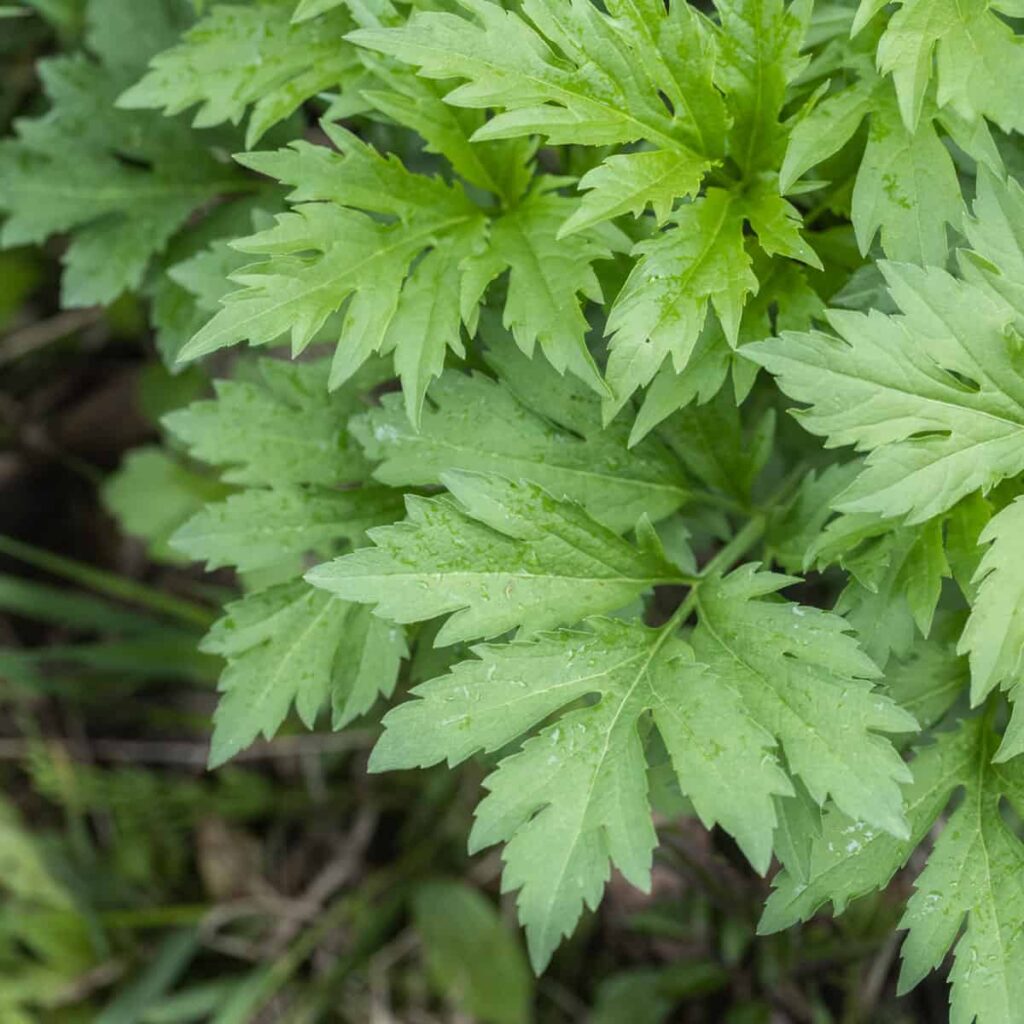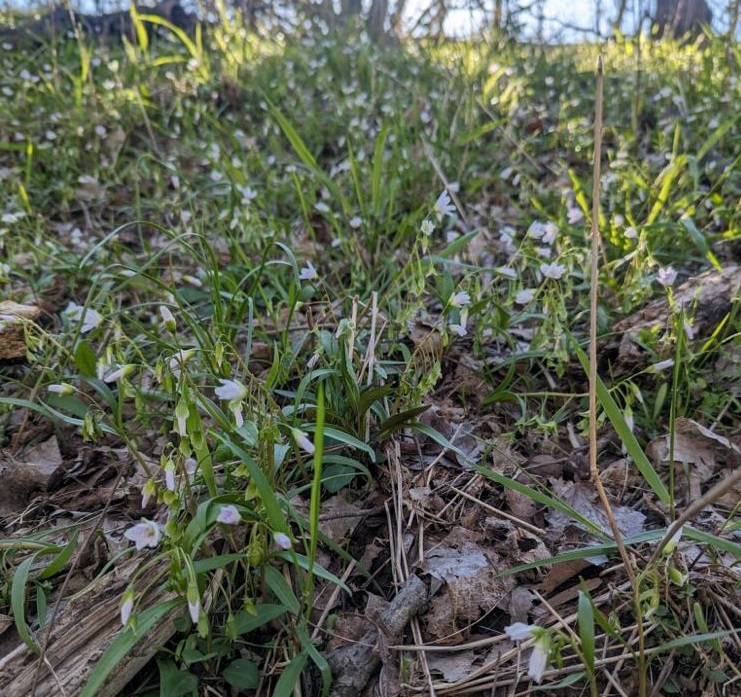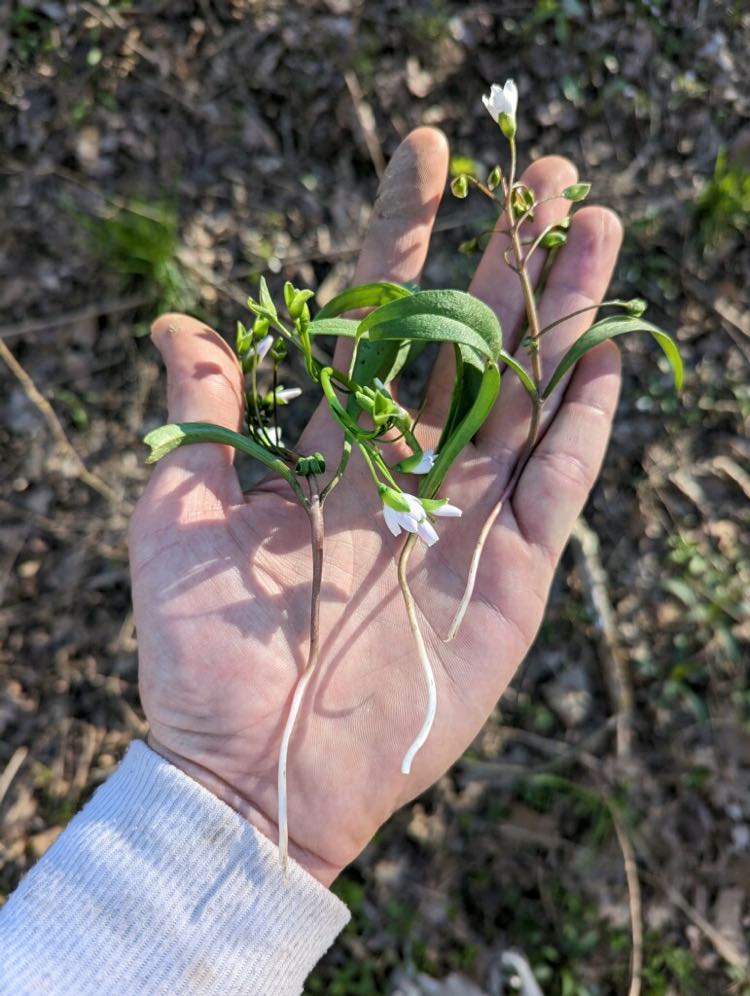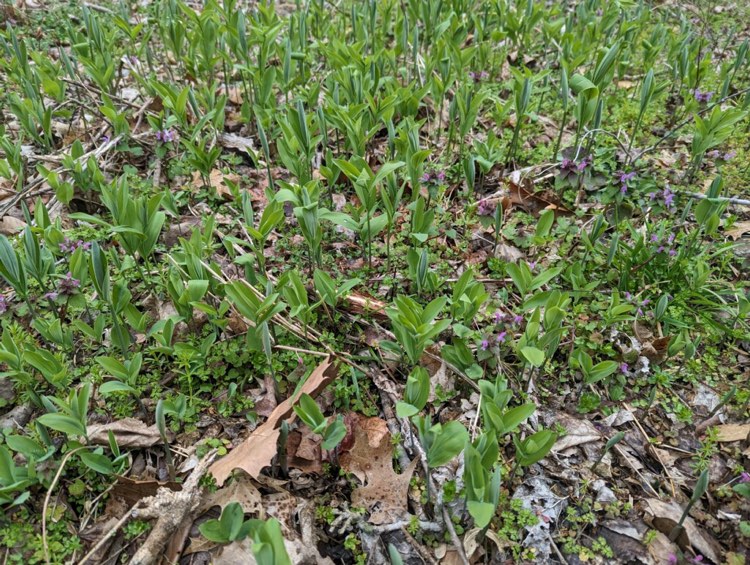Our Nutritional Supplement Wild Greens formula captures the ephemeral peak of wild greens season into a stable extract form, ready to be enjoyed year-round. We meticulously handpick several of the most nutritionally dense species of greens, combining them into a balanced powerhouse of minerals, vitamins, flavonoids, and soothing, digestion-supporting complex polysaccharides that promote an ideal probiotic composition in our guts. In addition to digestive support, this formula contains herbs traditionally known to enhance immune wellness, liver and kidney health, and radiant skin. Ensuring an adequate intake of healthy minerals and vitamins is crucial for supporting every bodily system at peak performance. Each herb in this carefully chosen blend offers unique benefits and virtues.
The peak season for wild greens is a much-anticipated time across our hemisphere. This fleeting period of nutritious and delicious abundance spans from early to mid-spring, during which field and forest greens flourish, set seed, and fade away, often before gardeners even harvest their first asparagus. In Kentucky, we are fortunate to enjoy dozens of unique species that fortify and nourish the body with a diverse range of health-affirming properties, broad-spectrum vitamins, minerals, and delightful flavors.

Spring Beauty
While many are familiar with the common garden nettles (Urtica dioica), a European species, we utilize our locally abundant wild species, Urtica chamaedryoides. Packed with essential vitamins, minerals, and deep green chlorophyll, this traditional food, medicine, and fiber plant serves as a central pillar in our unique blend. Known for its robust flavor, wild nettles have been traditionally used to help alleviate seasonal allergy symptoms, as an anti-inflammatory herb, and as a powerful antioxidant to help the body resist stress and disease.
Spring Beauty
A few decades ago, a popular foraging field guide suggested that the eastern species of Claytonia were too rare and too small to justify foraging. However, the author clearly had not explored our Kentucky spring woodlands! Our populations of both Claytonia virginica and Claytonia caroliniana are so healthy and vigorous that they often form vast ground-covering stands across hillside after hillside, thriving under our deciduous emerald canopy. This is a common occurrence in Kentucky botany: while a plant might be rare in other states, it can be quite abundant here. To illustrate, we’ve included photos showing how large and succulent our spring beauties can get and how they cover entire hillsides.

Spring Beauty Leaves
While the bulb-like root (technically a corm) was cherished by the indigenous tribes of this region for its sweet, starchy delight, we exclusively harvest the superfood-status leaves for our purposes. The plant regenerates effectively from its starchy storage root, and the large patches of Spring Beauty that we have tended and foraged for decades seem to grow fuller and more robust with our care and affection.
These nutrient-loaded leaves are rich in complex polysaccharides, which are similar to those found in aloe vera. These healthy compounds soothe the digestive tract and promote the absorption of essential minerals and vitamins. Known as “prebiotics,” these complex polysaccharides help feed the healthy gut probiotics that are crucial for overall life and wellness.

Sochan: A Hidden Gem in Wild Greens
Sochan, known to the Cherokee as a cherished and versatile edible plant, is a relative of Echinacea scientifically named Rudbeckia laciniata, or cutleaf coneflower. This wild green stands out as one of our favorites due to its unique ability to remain tender and delicious throughout its growing season, even into the summer. While most wild greens become tough, bitter, or inedible as the season progresses, Sochan remains a gentle, flavorful option. Its sublime, slightly sweet, and aromatic taste makes it hard to go back to common commercial greens once the growing season ends.
We hold great respect for Sochan as an important traditional food and medicine among the tribes of our region. We pick lightly from our extensive stands and spread the abundant seeds as they ripen in late summer and fall, ensuring the plant’s sustainability.
This plant, like many others, was highly valued by the original cultures of this area but has largely been forgotten or overlooked in modern times. While there is a recent small renaissance among herbalists and foragers, we keep at the forefront of our minds the importance of this ancient food plant to many tribes. There is a careful way to honor this fact while harvesting and promoting the increase of wild stands of Sochan.
Nutritional and Medicinal Benefits of Sochan and Solomon’s Seal
Sochan, a relative of Echinacea, not only stands out for its abundant nutritional value but also provides a gentle boost to immune health, enhancing the body’s ability to resist disease and infection. As a mild lymphagogue, Sochan aids in safely flushing toxins from the body. As a “food herb,” its medicinal effects are deep and sustaining, making it gentle and safe enough for daily use.
Solomon’s Seal: Solomon’s Seal, also known as Polygonatum biflorum, produces one of the earliest wild foods to emerge from wintry soils. This member of the asparagus family offers shoots that are not only exceedingly delicious but also packed with nutrition and medicinal benefits. Rising well before asparagus, Solomon’s Seal shoots surpass their common cousin in flavor and texture, boasting a rich and slightly nutty taste reminiscent of sweet peas.
While its dietary values are extensive, Solomon’s Seal is particularly celebrated for promoting gut health. Traditional herbalism values this herb for its ability to reduce inflammation throughout the body, especially in the digestive tract. Additionally, Solomon’s Seal promotes the healing of wounds within the digestive system. Although the root is typically used in herbal medicine, the spring shoots carry these medicinal benefits in a gentle and nutritious package.
Both Sochan and Solomon’s Seal exemplify the powerful synergy of nutrition and gentle, effective medicinal properties, making them valuable additions to a health-conscious diet.

Kentucky Mint: The Unique Flavor of Tradition
Famous for its distinctive flavor in a traditional Mint Julep, Kentucky Mint is a unique form of peppermint, often identified commercially as ‘Kentucky Colonel Mint.’ Peppermint, essentially a hybrid between wild water mint and European spearmint (Mentha x aquatica), thrives in spring-fed streams throughout Kentucky. Each stand of mint possesses unique flavor notes, as the proportion of wild mint to spearmint (and other hybrids, since Mentha species readily hybridize) varies from place to place.
The variety we use in the Wild Greens formula comes from a pristine, limestone spring-fed stream in our local woodlands, and has a particularly delightful aroma and flavor. Beyond sweetening the flavor profile of this blend, mint is cherished as a soothing digestive herb, safe enough for children. We find that a bit of wild Kentucky hybrid mint is the perfect final touch to this carefully crafted nourishing blend!




